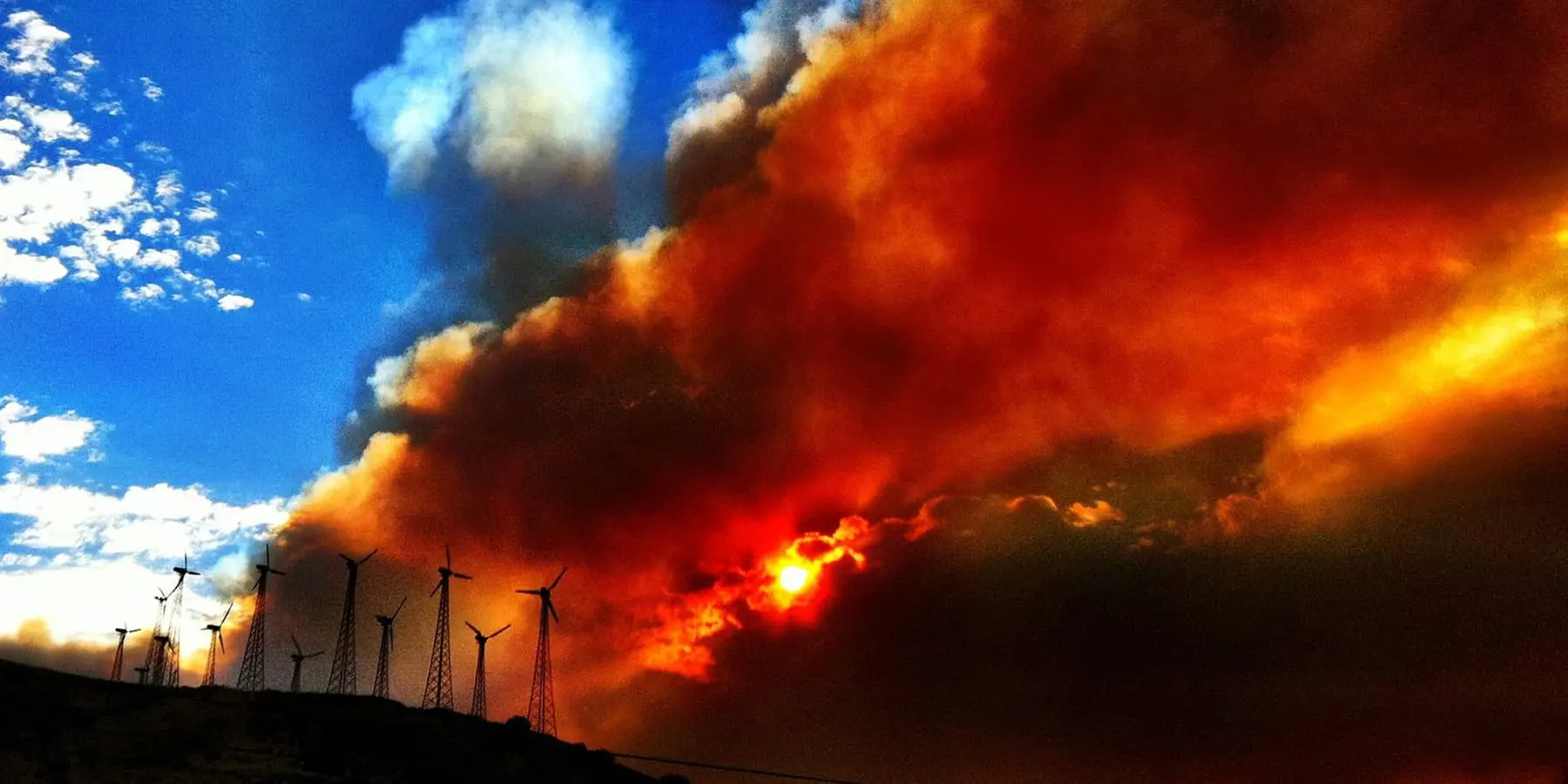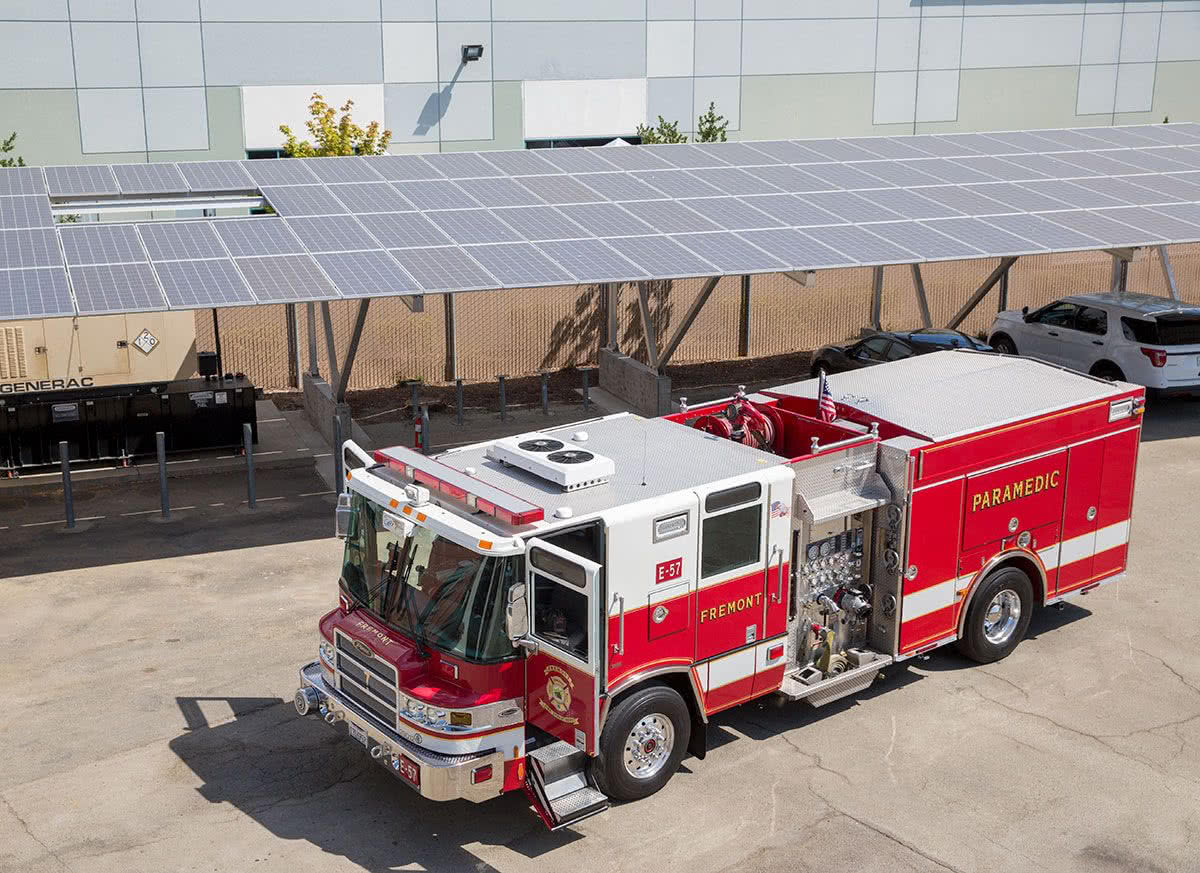Power Shutoffs To Prevent Wildfires Put A Premium On Energy Resilience
October 8, 2019

Photo by evdropkick, Flickr CC.
Over the last two years, wildfires have decimated some California communities and killed dozens of people. Some of the fires were started by power lines touching trees or dropping sparks onto dry grass.
As a result, utilities are increasing the use of “public safety power shutoffs,” shutting off high voltage power lines on hot, dry, and windy days, when the threat of wildfires is high.
A single high-voltage power line may serve many communities and thousands of homes and businesses, traffic lights, water pumps, cell phone towers, and all the myriad things that make our society tick. PG&E has warned that power could be out for two or three days, or in a worst case scenario, as long as eight days.
“When you look at what PG&E is saying about the shut offs, it could be longer,” says Deidre Sanders, EBCE’s Director of Public Policy. “If the system is damaged they have to inspect and repair and test it before turning it back on. That takes time.”
EBCE can help play a role in facilitating communication and preparedness for its Alameda County customers, but PG&E is solely responsible for maintaining the transmission system, which includes making decisions about power shutoffs.
Vulnerable Customers
While an outage of hours or even a day can be inconvenient and expensive for homeowners and businesses, it can be potentially dangerous for some. People who depend on powered medical equipment, such as ventilators and oxygen concentrators, need to be prepared for prolonged outages with backup power or have other plans in place to see them through until power is restored.
The US Department of Health and Human Services counts 5,425 households in Alameda County with Medicare beneficiaries that rely on electricity-dependent medical equipment. But EBCE has about 13,000 customers on a “medical baseline” rate. Medical Baseline provides certain protections for residential customers that have special energy needs due to qualifying medical conditions.
But Medical Baseline enrollments may not accurately capture all vulnerable customers, nor do they all have the same needs and risks. EBCE is working with the Alameda County Office of Emergency Services to better identify electricity dependent medical customers, assess their needs, and figure out the best plan for helping them during an outage.
Critical Facilities
Electricity is also a vital need for the facilities that protect public health and safety, like hospitals, police and fire stations, and emergency shelters. Even designated “cooling centers,” which provide air conditioned space during periods of extreme heat, can be vital.
These “critical facilities” will be especially important in a long power outage as they respond to emergencies and the needs of vulnerable populations.
Some critical facilities, like hospitals, already plan for reliable electricity, with strict state regulations requiring diesel-fueled generators and large amounts of fuel on site. But not all are so carefully regulated. Those that do have backup generators may not have a secure fuel supply, limiting the length of time they can operate.
Plus gas and diesel generators come with their own problems, such as noise and air pollution, and the hazard of carbon monoxide poisoning if they are not properly vented.
This is where resilience efforts come into play.
From Power Shutoffs Toward Power Resilience
While EBCE has no role in calling public safety power shutoffs, it has a strong role in promoting a resilient grid through clean distributed energy resources like solar power and batteries. EBCE can set favorable distributed energy policies, like net metering, and pay for distributed resources for their capacity, through resource adequacy payments. EBCE has enrolled over 25,000 solar customers, and anticipates another 4,000 to transfer over from PG&E by the end of the year.
Combining solar with distributed batteries can make “resilient solar,” on-site power systems that can operate independently of the grid during outages, and provide energy and grid services during normal times.
EBCE recently awarded a contract to Sunrun to combine storage batteries with solar on low-income single-family homes scattered throughout the service territory, with an emphasis on West Oakland. This “virtual power plant” approach will provide onsite customer benefits while also providing grid services and resource adequacy for the whole system.
“This deal is part of the transition of customers to being a producer-consumer or ‘prosumer,’ where they invest in energy to serve their own needs and also to serve the grid,” says EBCE CEO Nick Chaset.
Supported by a grant from the Bay Area Air Quality Management District (BAAQMD), EBCE is working with Peninsula Clean Energy to assess the potential for resilient power systems on critical facilities in Alameda and San Mateo County. The core of such systems would be onsite solar and battery storage.
EBCE member city Fremont is home to such a project, on three Fremont fire stations. The project by Fremont engineering firm Gridscape Solutions was funded by a 2015 grant from the California Energy Commission. After a four year demonstration period, the project was dedicated at a ribbon-cutting ceremony on April 2, attended by Fremont Mayor and EBCE board member Lily Mei.

Fremont fire station with solar microgrid. Photo from the California Energy Commission.
The fire station microgrids will protect emergency services against power outages, while also reducing Fremont’s utility bills by approximately $215,000 over ten years (plus $32,000 already saved during the demonstration period). They will also cut the municipal government’s carbon dioxide emissions by around 80,000 pounds per year.
The state is also ramping up support for energy resilience, as CPUC commissioner Cliff Rechtschaffen released a revised decision on September 12th that would create a new $100 million “equity resiliency” budget in the long-running Self Generation Incentive Program (SGIP). The rule would boost incentives for storage systems for low-income customers, medical baseline customers, and critical facilities in high-risk fire areas to $1.00 per Watt-hour, enough to fully cover their cost.
While EBCE can’t control the risk of wildfires, we can help prepare our communities for outages due to fire prevention, as well as earthquakes and other natural disasters.